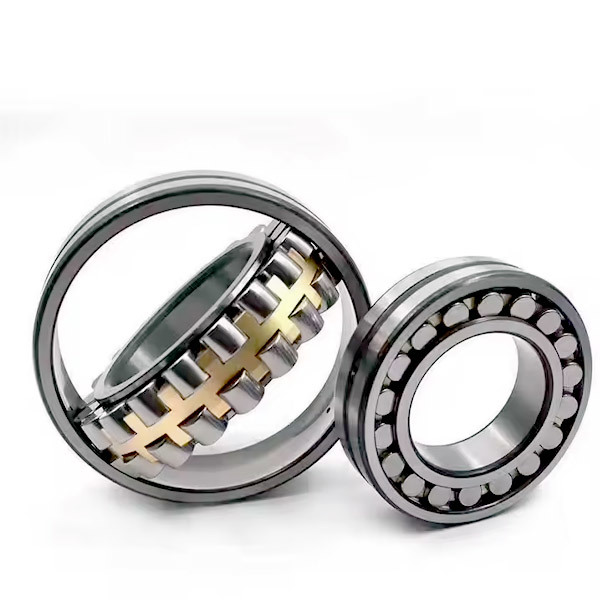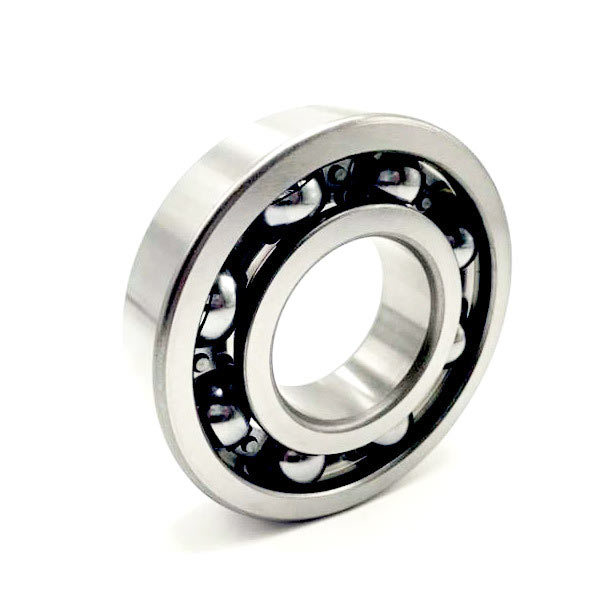27
2025
-
06
Spherical Roller Bearings: Key Factors in Machinery Performance
Spherical Roller Bearings: Key Factors in Machinery Performance Table of Contents Understanding Spherical Roller Bearings Importance of Spherical Roller Bearings in Machinery Key Factors Affecting Performance Load Capacity and Its Impact on Machinery Performance Vibration Resistance and Noise Reduction Lubrication Techniques for Optimal Bearing Performance Maintaining Spherical Roller Bearings fo
Spherical Roller Bearings: Key Factors in Machinery Performance
Table of Contents
- Understanding Spherical Roller Bearings
- Importance of Spherical Roller Bearings in Machinery
- Key Factors Affecting Performance
- Load Capacity and Its Impact on Machinery Performance
- Vibration Resistance and Noise Reduction
- Lubrication Techniques for Optimal Bearing Performance
- Maintaining Spherical Roller Bearings for Longevity
- Common Applications of Spherical Roller Bearings
- Conclusion
- Frequently Asked Questions (FAQs)
Understanding Spherical Roller Bearings
Spherical roller bearings are a type of rolling-element bearing that can accommodate both radial and axial loads. They consist of an inner ring, an outer ring, and a set of spherical rollers that allow for misalignment. This unique design enables them to handle heavy loads and significant misalignment, making them ideal for various industrial applications.
Components of Spherical Roller Bearings
The main components of spherical roller bearings include:
- **Inner Ring**: The part that fits onto the shaft, providing a surface for the rollers to rotate.
- **Outer Ring**: The stationary part that houses the rollers and provides support.
- **Spherical Rollers**: These are arranged to allow for rotation and can accommodate misalignment, reducing wear and tear on the bearing.
- **Cage**: A structure that separates the rollers and maintains their position during operation.
Importance of Spherical Roller Bearings in Machinery
Spherical roller bearings play a crucial role in the performance of machinery. Their design allows them to handle extreme conditions, making them indispensable in various industries, such as construction, mining, and manufacturing. The ability to manage both radial and axial loads significantly enhances machine efficiency and reliability.
Key Factors Affecting Performance
Several factors can impact the performance of spherical roller bearings. Understanding these factors is essential for optimizing machinery efficiency and longevity.
Load Capacity
The load capacity of a bearing is one of the most critical factors influencing its performance. Spherical roller bearings can carry substantial loads, but the specific load capacity depends on:
- **Material Strength**: The quality and type of materials used in the bearing's construction.
- **Design**: The geometric configuration of the bearing significantly impacts its load-bearing abilities.
Operational Conditions
Environmental factors such as temperature, humidity, and contamination can affect bearing performance. Implementing proper protective measures can mitigate these influences, ensuring that bearings function optimally.
Load Capacity and Its Impact on Machinery Performance
The load capacity of spherical roller bearings is typically divided into dynamic and static ratings. Dynamic load capacity refers to the maximum load the bearing can withstand while in motion, while static load capacity refers to the maximum load it can bear when stationary.
Dynamic Load Capacity
Dynamic load capacity is crucial for applications involving continuous operation. Selecting bearings with the appropriate dynamic load capacity ensures that they can handle the stresses of daily use without premature failure.
Static Load Capacity
Static load capacity is particularly important in applications where bearings experience sudden load increases or where machinery may be stationary for extended periods. Understanding this capacity helps in choosing the right bearings to avoid damage during unforeseen circumstances.
Vibration Resistance and Noise Reduction
Vibration can significantly affect the performance and lifespan of machinery. Spherical roller bearings are designed to minimize vibration and noise, which contributes to smoother operation and reduced wear over time.
Vibration Analysis
Regular vibration analysis can help identify issues before they lead to catastrophic failure. By monitoring the vibration levels of machinery equipped with spherical roller bearings, maintenance professionals can make informed decisions about repairs and replacements.
Noise Reduction Techniques
Implementing noise reduction techniques, such as proper lubrication and alignment, can enhance the performance of spherical roller bearings. These practices contribute to a quieter and more efficient operational environment.
Lubrication Techniques for Optimal Bearing Performance
Proper lubrication is vital for the performance and longevity of spherical roller bearings. It reduces friction, minimizes wear, and disperses heat generated during operation.
Types of Lubricants
There are various types of lubricants to choose from, including:
- **Greases**: Ideal for applications with low to moderate speeds.
- **Oils**: Suitable for high-speed applications and provide better heat dissipation.
- **Synthetic lubricants**: Offer superior performance in extreme conditions.
Lubrication Methods
Choosing the right lubrication method is essential for maintaining bearing performance. Common methods include:
- **Manual Greasing**: Suitable for low-usage applications.
- **Automatic Lubrication Systems**: Ideal for larger operations where consistent lubrication is necessary.
Maintaining Spherical Roller Bearings for Longevity
Regular maintenance of spherical roller bearings is crucial for maximizing their lifespan and ensuring optimal performance.
Inspection and Monitoring
Routine inspections can help identify wear and potential issues before they become severe. Monitoring factors such as temperature and noise can provide valuable insights into the bearing's condition.
Replacement Schedule
Establishing a replacement schedule based on operational hours and environmental conditions can prevent unexpected failures and downtime.
Common Applications of Spherical Roller Bearings
Spherical roller bearings are widely used across various industries due to their versatility and robustness. Some common applications include:
- **Heavy Machinery**: Used in construction and mining equipment.
- **Wind Turbines**: Essential for the efficient operation of renewable energy systems.
- **Industrial Equipment**: Employed in manufacturing processes where heavy loads are common.
Conclusion
Spherical roller bearings are integral to the performance and reliability of machinery across industries. By understanding the key factors that affect their performance, including load capacity, vibration resistance, and lubrication techniques, professionals can enhance operational efficiency and extend the lifespan of their equipment. Regular maintenance and careful selection of suitable bearings will lead to improved machinery performance, reduced downtime, and ultimately, greater productivity.
Frequently Asked Questions (FAQs)
1. What are spherical roller bearings used for?
Spherical roller bearings are commonly used in heavy machinery, wind turbines, and various industrial applications due to their ability to handle both radial and axial loads.
2. How do I choose the right spherical roller bearing?
Selecting the right bearing involves considering factors such as load capacity, operational conditions, and lubrication requirements.
3. How often should spherical roller bearings be lubricated?
Lubrication frequency depends on usage conditions, but regular inspections can help determine the optimal schedule for each application.
4. What are the signs of a failing spherical roller bearing?
Common signs include increased noise, excessive vibration, and unusual heat generation.
5. Can spherical roller bearings be used in high-temperature environments?
Yes, but it is essential to select bearings and lubricants specifically designed for high-temperature applications to ensure optimal performance.
By following the guidelines presented in this article, we can significantly enhance our understanding of spherical roller bearings and their impact on machinery performance, ultimately leading to better operational outcomes.
10% DISCOUNT FOR NEW CUSTOMERS

WhatsApp:+8613211157555
Tel: +8613211157555
Address:Room 1106, 11th Floor, No. 23, Fengshan West Road, Jinbang Community, Daliang Street, Shunde District, Foshan City, Guangdong Province
Copyright 2025 Schaeffler (Guangdong) Transmission Technology Co., Ltd. SEO Business license




